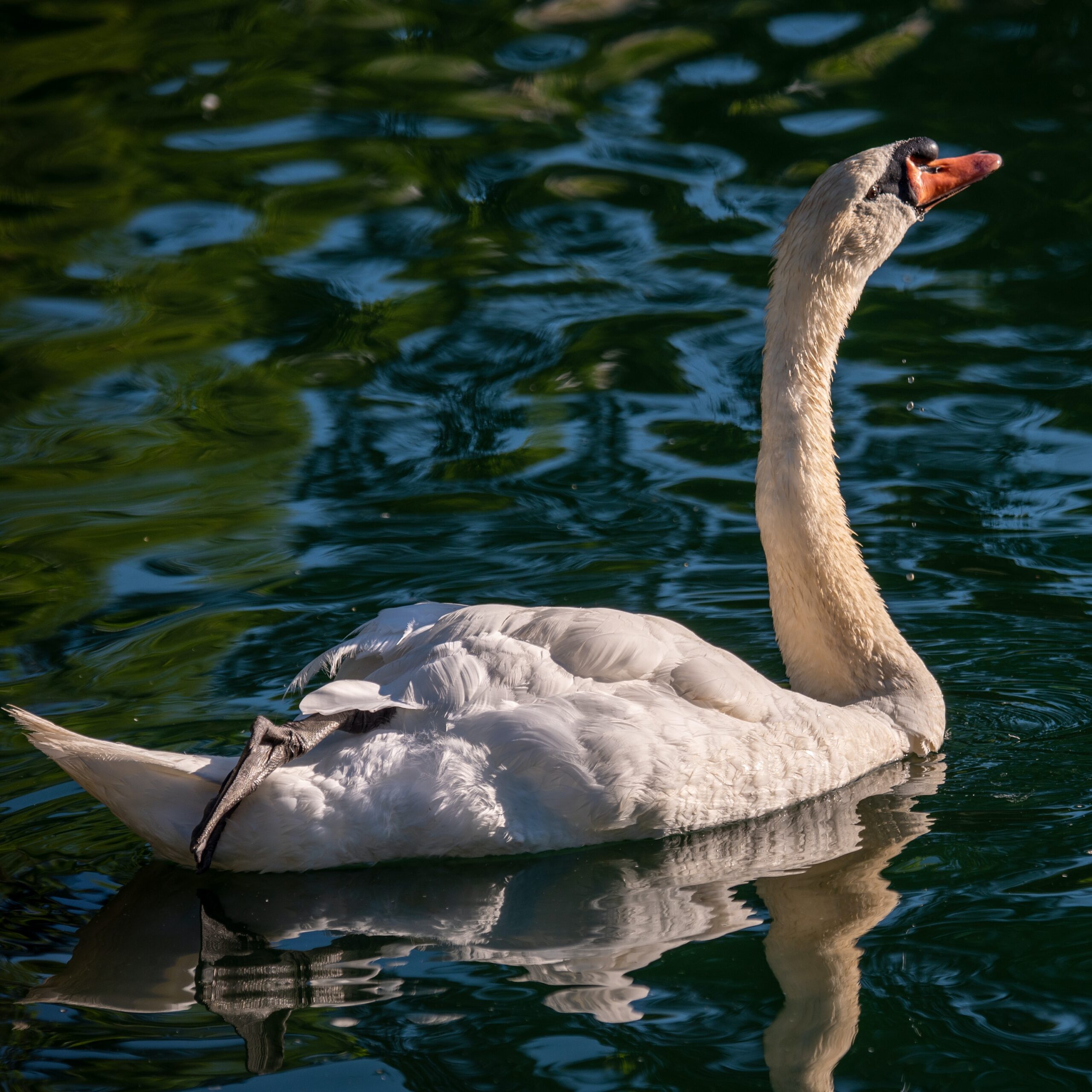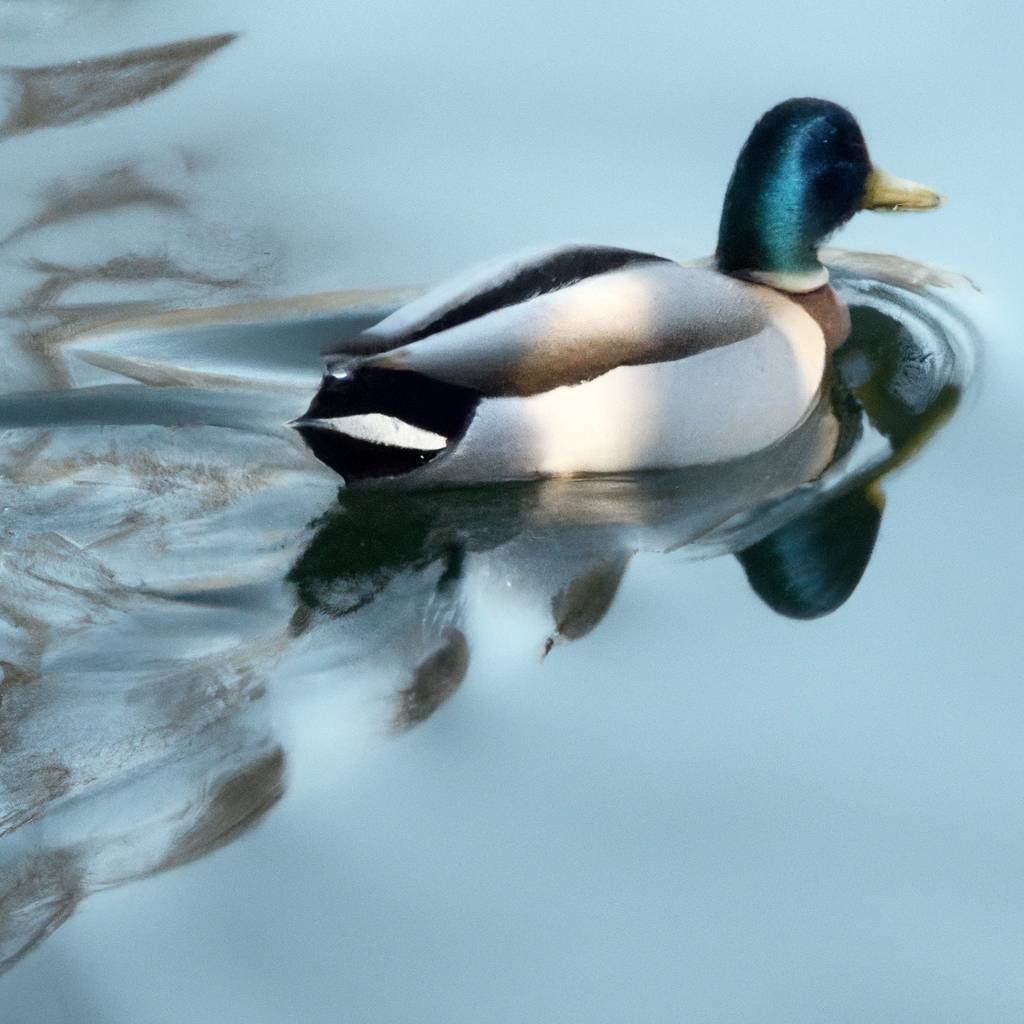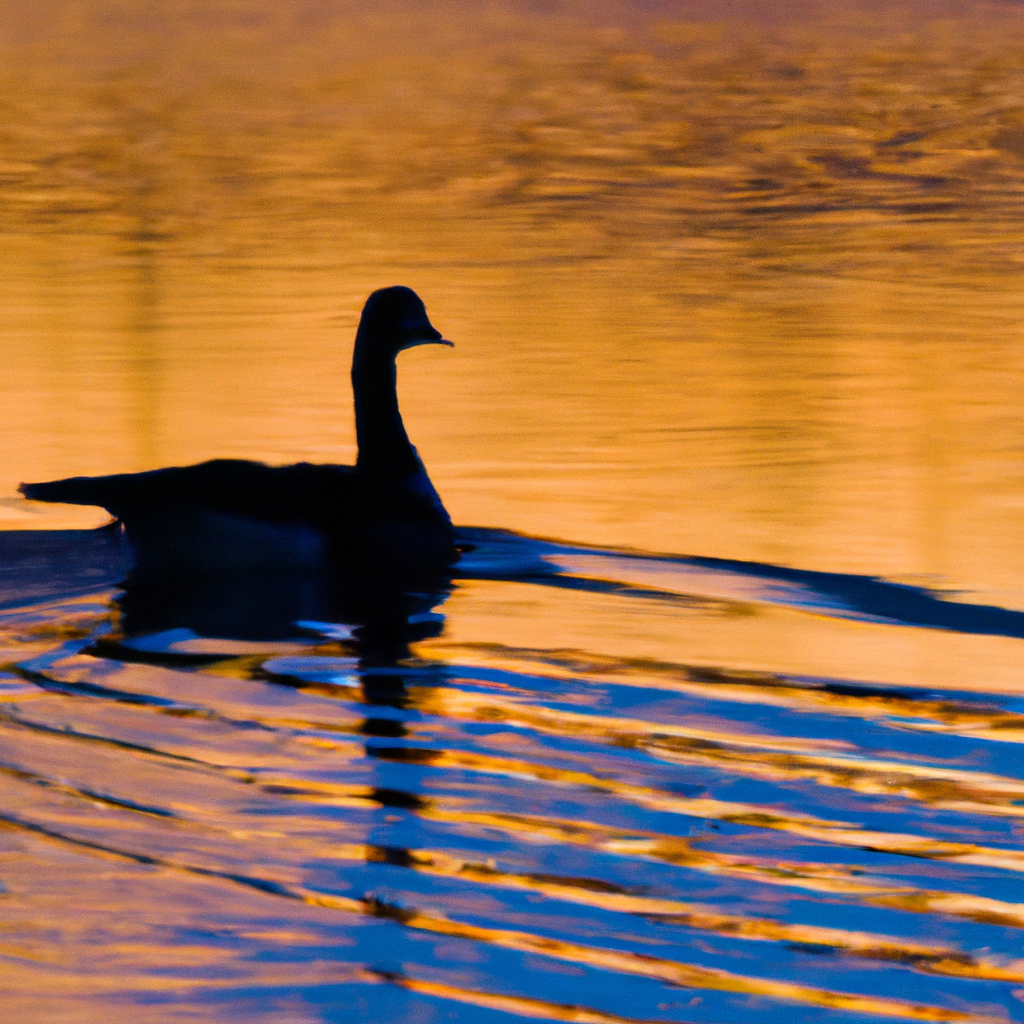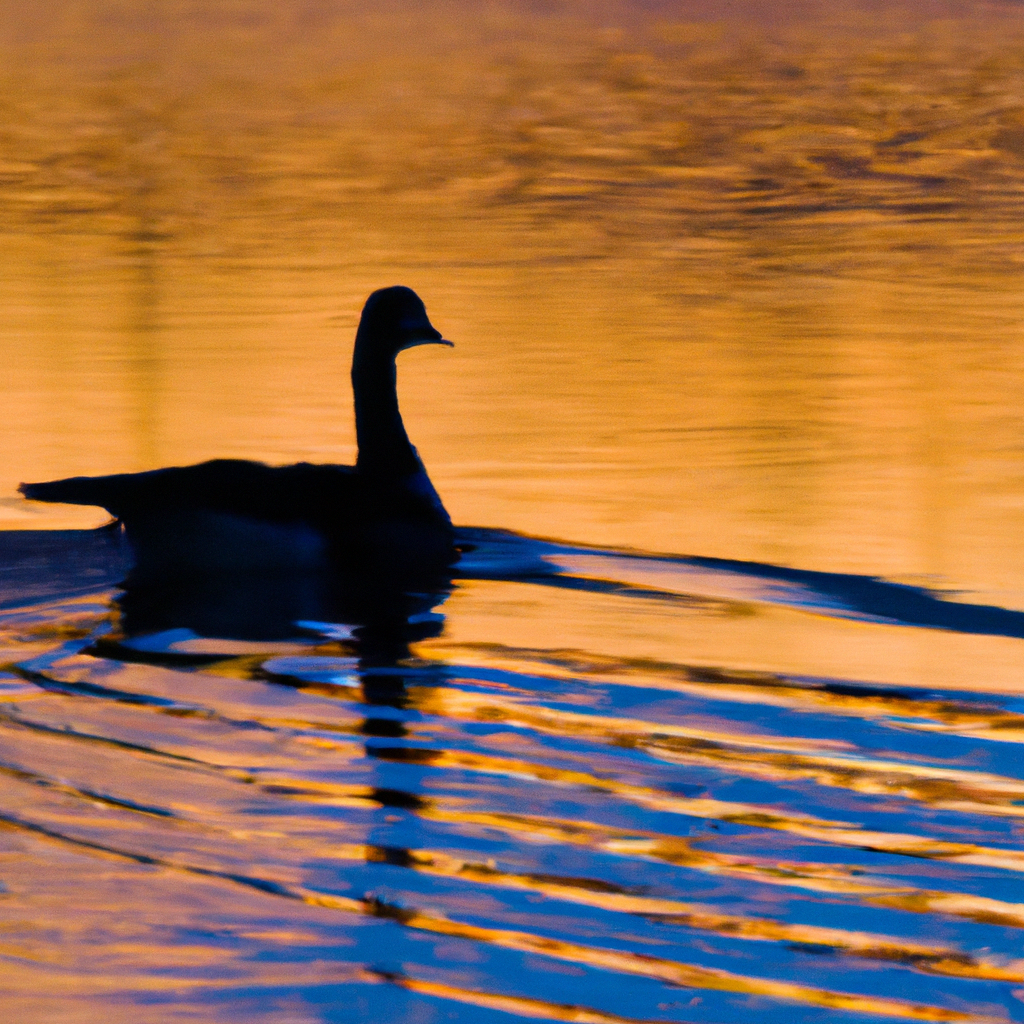In this article, you will discover the fascinating world of avian species that possess the remarkable ability to navigate and thrive in both the skies and waters. Delving into the question of what type of birds can swim, we will explore various species that have adapted their anatomical structures and behaviors to gracefully glide across the water’s surface. From the agile and elegant swan to the energetic and nimble penguin, you will gain a deeper understanding of the diverse adaptations that allow these remarkable birds to conquer both the skies and the sea. Join us as we uncover the marvels of avian aquatic feats.
This image is property of images.unsplash.com.
Introduction
In the vast and diverse world of avian species, there exists a multitude of birds that are adept at swimming. These remarkable creatures have evolved unique adaptations and characteristics that allow them to navigate through water with grace and ease. From the majestic waterfowl to the lively penguins, the streamlined auks to the agile terns, and the elegant flamingos to the resourceful grebes, each group of swimming birds possesses its own distinct features. In this comprehensive article, we will explore the different types of birds that can swim, delving into the fascinating world of waterfowl, penguins, auks, cormorants, gulls, terns, alcids, grebes, and the unique flamingos.
Waterfowl
Mallards
Mallards, scientifically known as Anas platyrhynchos, are one of the most widely recognized and versatile species of ducks. With their vibrant green heads, yellow beaks, and iridescent feathers, mallards are not only renowned for their beauty but also their swimming abilities. These dabbling ducks possess webbed feet that aid in propulsion while they paddle gracefully through the water. Mallards are equally comfortable swimming in freshwater habitats as well as brackish or saltwater environments, making them incredibly adaptable.
Ducks
Ducks, belonging to the Anatidae family, comprise a diverse group of water-loving birds. Known for their characteristic wide beaks and flat, broad tails, ducks possess specialized webbed feet that act as efficient paddles. These unique anatomical features enable ducks to propel themselves through water with remarkable agility and speed. From the colorful Wood Duck to the striking Mandarin Duck, ducks encompass a wide range of species, each with its own distinct swimming abilities suited for various aquatic habitats.
Geese
Geese, members of the Anatidae family, are renowned for their V-shaped flying formations and their honking calls. These sociable birds are equally at home in water as they are in the skies. Geese possess webbed feet that contribute to their excellent swimming capabilities, allowing them to gracefully glide across rivers, lakes, and ponds. With their large and sturdy bodies, geese are built for swimming, enabling them to navigate through water effortlessly while foraging for food or foraging during migration.
Swans
Swans, known for their elegance and grace, belong to the Anatidae family and are recognized for their long necks and pristine white feathers. These magnificent birds are natural swimmers, with their long necks and strong wings enabling them to navigate through water with ease. Swans have large, webbed feet that provide optimal thrust, allowing them to gracefully paddle across lakes and rivers. Their exceptional swimming abilities are complemented by their remarkable beauty, making swans a beloved sight in many bodies of water around the world.
Penguins
Emperor Penguin
Emperor penguins, scientifically referred to as Aptenodytes forsteri, are truly exceptional swimmers. These iconic birds inhabit the frigid Antarctic regions and have evolved numerous adaptations to thrive in their icy aquatic environment. Emperor penguins have a streamlined body shape, with their wings adapting into efficient flippers that help propel them through the water. Their webbed feet contribute to their exceptional swimming abilities, allowing them to dive to astounding depths in search of their primary food source, fish and krill.
Adelie Penguin
Adelie penguins, scientifically known as Pygoscelis adeliae, are another remarkable species of penguins that have adapted to a life of swimming and diving. Found in the Antarctic continent, these charismatic birds possess a set of anatomical features perfectly suited for their aquatic lifestyle. Adelie penguins have compact, hydrodynamic bodies, reducing drag as they glide through the water. Their strong, webbed feet aid in propulsion, enabling them to swiftly chase prey and evade predators beneath the surface.
Macaroni Penguin
Macaroni penguins, scientifically referred to as Eudyptes chrysolophus, are distinctive for their striking yellow crest feathers atop their heads. These energetic birds inhabit the subantarctic and coastal regions of the Southern Ocean. Macaroni penguins are highly skilled swimmers, utilizing their webbed feet and strong wings to dive and maneuver through the water. Their streamlined bodies and torpedo-like form contribute to their speed and agility, making them well-suited for their aquatic lifestyle.
Gentoo Penguin
Gentoo penguins, scientifically known as Pygoscelis papua, are a species of penguins recognized for their vibrant red-orange bills and white-feathered caps. These sociable birds inhabit a wide range of subantarctic islands and the Antarctic Peninsula, showcasing their excellent swimming abilities in these icy waters. Gentoo penguins have webbed feet that propel them through the water, while their streamlined bodies and robust wings aid in rapid underwater movement. They are skilled divers, capable of reaching impressive depths in pursuit of their prey, primarily fish and krill.
Auks
Atlantic Puffin
Atlantic puffins, scientifically referred to as Fratercula arctica, are charismatic seabirds known for their brightly colored beaks and comical appearance. These fascinating birds breed in colonies along the coastlines of the North Atlantic Ocean. Atlantic puffins are highly specialized swimmers, using their short wings as precise paddles and their webbed feet as efficient propellers. Their adept swimming abilities allow them to dive underwater, propelling themselves with remarkable agility in search of small fish to feed themselves and their young.
Razorbill
Razorbills, scientifically known as Alca torda, are striking black and white seabirds that frequent the coastal cliffs of the Atlantic Ocean and the North Sea. These auks are adept swimmers, using their wings and webbed feet to navigate through the water with precision and speed. Razorbills have streamlined bodies, arrow-shaped wings, and webbed feet that all contribute to their agility while swimming and diving. With their strong beaks, they catch fish underwater, making them expert hunters in their marine habitats.
Common Murre
Common murres, scientifically referred to as Uria aalge, are sleek seabirds that inhabit the northern coastal regions of the Atlantic and Pacific Oceans. These diving birds excel in swimming, propelling themselves underwater using their strong webbed feet. With their torpedo-shaped bodies and agile wings, common murres effortlessly glide through the water in search of their preferred fish prey. These birds are known for their impressive diving ability, reaching depths of up to 180 meters during their foraging expeditions.
Black Guillemot
Black guillemots, scientifically known as Cepphus grylle, are striking birds adorned with glossy black plumage and bright red feet. These seabirds have adapted to their marine lifestyle in the northern coastal areas of the Atlantic Ocean and the Arctic. Black guillemots are proficient swimmers, utilizing their webbed feet to propel themselves through the water with ease. Their slender bodies and streamlined wings aid in efficient underwater movement, allowing them to pursue fish and underwater invertebrates.

This image is property of images.unsplash.com.
Cormorants
Great Cormorant
Great cormorants, scientifically referred to as Phalacrocorax carbo, are large and agile diving birds that can be found in various aquatic habitats around the world. These birds possess specialized adaptations for swimming, including their streamlined bodies and strong webbed feet. Great cormorants utilize both their wings and their feet to propel themselves underwater, allowing them to dive to considerable depths in search of their prey, which primarily consists of fish. After diving, they often emerge from the water with their wings spread, a distinctive sight commonly associated with cormorants.
Double-crested Cormorant
Double-crested cormorants, scientifically known as Phalacrocorax auritus, are versatile swimmers that inhabit freshwater, coastal, and marine environments across North America. These birds possess unique adaptations for swimming, such as their long, slender bodies and webbed feet. Double-crested cormorants dive underwater using their wings and feet to propel themselves with exceptional precision. They are proficient fishers, and their diet primarily consists of fish species found in the waters they inhabit.
Neotropic Cormorant
Neotropic cormorants, scientifically referred to as Phalacrocorax brasilianus, are highly adaptable swimmers that can be found in various aquatic habitats throughout the Americas. These birds possess streamlined bodies and long, slender necks, facilitating their movement underwater. Neotropic cormorants use their webbed feet to propel themselves through the water while diving to capture their prey, which mainly consists of small fish and aquatic invertebrates. Their remarkable swimming abilities allow them to thrive in diverse freshwater and coastal ecosystems.
European Shag
European shags, scientifically known as Phalacrocorax aristotelis, are coastal birds that can be found along the North Atlantic coasts and certain inland water bodies in Europe. These swimmers have evolved unique adaptations that enable them to excel in their marine habitats. European shags possess webbed feet that aid in swimming and allow for efficient propulsion through the water. With their streamlined bodies and strong neck muscles, they can dive to significant depths to hunt for fish and other small marine organisms.
Gulls
Herring Gull
Herring gulls, scientifically referred to as Larus argentatus, are large and widespread gulls found across many coastal regions of North America, Europe, and Asia. These versatile birds are equipped with webbed feet that facilitate their swimming abilities, allowing them to gracefully navigate through the water. Herring gulls are opportunistic feeders, often diving into the water to catch fish, scavenging for carrion, or foraging for other marine organisms along the shorelines.
Common Gull
Common gulls, scientifically known as Larus canus, are medium-sized gulls that can be found in various habitats throughout the northern regions of Europe, Asia, and North America. These resourceful birds possess webbed feet that aid in swimming, allowing them to swim proficiently in both freshwater and saltwater environments. Common gulls are opportunistic feeders, often diving into the water to catch fish, nab invertebrates, or scavenge for a variety of food sources available along coastlines or inland water bodies.
Great Black-backed Gull
Great black-backed gulls, scientifically referred to as Larus marinus, are the largest species of gulls found in the Atlantic Ocean and the northern regions of North America and Europe. These powerful birds are superb swimmers, with their webbed feet serving as efficient propellers. Great black-backed gulls utilize their swimming abilities to their advantage, foraging for various prey in their coastal and marine habitats. With their immense size and strength, they are even known to steal food from other seabirds.
Laughing Gull
Laughing gulls, scientifically known as Leucophaeus atricilla, are medium-sized gulls that inhabit the coastal regions of the Americas, including North, Central, and South America. These sociable birds possess webbed feet that contribute to their excellent swimming capabilities. Laughing gulls are often observed paddling through the water, seizing fish and various invertebrates to sustain their diet. Their distinctive laughing calls and agile swimming make them a common and charismatic sight along many shorelines.

This image is property of images.unsplash.com.
Terns
Caspian Tern
Caspian terns, scientifically referred to as Hydroprogne caspia, are large and graceful birds that inhabit coastal regions across much of the world. These aerial hunters are also highly skilled swimmers, using their webbed feet to effortlessly propel themselves through the water. Caspian terns dive into the water headfirst, seizing fish with their sharp beaks. Their exceptional swimming abilities and remarkable agility in the air make them formidable predators in their marine habitats.
Arctic Tern
Arctic terns, scientifically known as Sterna paradisaea, are remarkable avian migrants that possess exceptional swimming capabilities. These birds embark on an annual migration that takes them from their breeding grounds in the Arctic to their wintering areas in the Antarctic, covering an astonishing distance of approximately 40,000 kilometers. Arctic terns have streamlined bodies, long, pointed wings, and webbed feet, all of which contribute to their swimming and flying abilities. They plunge into the water to catch fish, displaying their prowess as both swimmers and world-class travelers.
Common Tern
Common terns, scientifically referred to as Sterna hirundo, are medium-sized birds that can be found in coastal regions across the Americas, Europe, and Asia. These graceful swimmers possess characteristic long, pointed wings and sharply forked tails. Common terns utilize their webbed feet to propel themselves through the water, hunting for small fish and invertebrates to sustain themselves. Their elegant flight and agile swimming make them a familiar and enchanting sight along many shorelines.
Roseate Tern
Roseate terns, scientifically known as Sterna dougallii, are striking seabirds that can be found in coastal areas around the world. These charismatic birds possess webbed feet that aid in their swimming abilities. Roseate terns are highly adept at swimming, gracefully gliding through the water in search of small fish and other aquatic creatures. With their delicate rosy plumage and slender bodies, they bring beauty and elegance to their marine habitats.
Alcids
Thick-billed Murre
Thick-billed murres, scientifically referred to as Uria lomvia, are sturdy seabirds that can be found in Arctic regions and subarctic coastal areas of the northern hemisphere. These birds are skilled swimmers, using their webbed feet to propel themselves through the water with remarkable efficiency. Thick-billed murres have streamlined bodies and well-developed wing muscles, enabling them to dive to great depths in search of their preferred prey, such as fish and invertebrates.
Crested Auklet
Crested auklets, scientifically known as Aethia cristatella, are charming seabirds that inhabit the coasts and islands of the northern Pacific Ocean. These agile birds possess webbed feet that allow them to swim adeptly through the water. Crested auklets are skilled divers, using their wings for propulsion as they plunge underwater in search of small fish, crustaceans, and other marine organisms. Their distinctive crests and lively behavior make them a fascinating addition to the diverse world of swimming birds.
Rhinoceros Auklet
Rhinoceros auklets, scientifically referred to as Cerorhinca monocerata, are peculiar-looking seabirds that inhabit coastal regions of the northern Pacific Ocean. These remarkable divers possess webbed feet that enable them to swim effortlessly through the water. Rhinoceros auklets have streamlined bodies, with their distinctive, horn-like bill contributing to their unique appearance. They are exceptional divers, often reaching considerable depths to pursue their primary prey of fish and various marine invertebrates.
Least Auklet
Least auklets, scientifically known as Aethia pusilla, are small and sociable birds that can be found in the northernmost regions of the Pacific Ocean. These energetic swimmers possess webbed feet that make them highly efficient in navigating through the water. Least auklets have compact bodies and short wings, allowing them to dive with agility in search of their preferred prey, which includes fish, krill, and other small marine organisms. Their endearing presence and seamless swimming abilities make them a delightful sight in their marine habitats.

Grebes
Pied-billed Grebe
Pied-billed grebes, scientifically referred to as Podilymbus podiceps, are small and compact diving birds that inhabit freshwater environments across the Americas. These skillful swimmers possess lobed toes on their feet, which enable enhanced propulsion through the water. Pied-billed grebes have streamlined bodies and exceptionally flexible necks, allowing them to move with ease both underwater and on the surface. Their diving abilities are remarkable, allowing them to swim underwater and capture small fish, crustaceans, and other aquatic prey.
Horned Grebe
Horned grebes, scientifically known as Podiceps auritus, are elegant diving birds that breed in northern areas of North America and Eurasia. These birds possess unique adaptations that make them exceptional swimmers. Horned grebes have lobed toes on their feet, which enhance their swimming capabilities by providing efficient propulsion in the water. They are highly adapted to their aquatic lifestyle, utilizing their slender bodies and specialized feathers to navigate through lakes, ponds, and coastal waters while in search of prey, primarily fish and invertebrates.
Western Grebe
Western grebes, scientifically referred to as Aechmophorus occidentalis, are stunning diving birds that can be found in freshwater habitats across western North America. These birds possess specialized adaptations for swimming, including long and slender necks, lobed toes, and streamlined bodies. Western grebes are highly skilled swimmers and divers, propelling themselves through the water using both their wings and their feet. Their striking courtship displays, known as the “rushing duet,” are a remarkable sight, further showcasing their aquatic prowess.
Red-necked Grebe
Red-necked grebes, scientifically known as Podiceps grisegena, are graceful divers that inhabit various aquatic habitats across North America, Europe, and Asia. These birds possess webbed feet that aid in their swimming abilities, allowing them to navigate through the water with elegance and precision. Red-necked grebes have long, slender necks and streamlined bodies, permitting them to submerge seamlessly below the water’s surface. They are expert divers, foraging for fish and other aquatic organisms to sustain their diet while embracing their skillful swimming capabilities.
Flamingos
Greater Flamingo
Greater flamingos, scientifically referred to as Phoenicopterus roseus, are iconic birds known for their vibrant pink plumage and long, slender legs. These graceful birds thrive in various water bodies across Africa, Europe, Asia, and the Americas. Greater flamingos possess webbed feet that facilitate their swimming abilities, allowing them to gracefully maneuver through the water with their characteristic elegance. While they are primarily known for their distinct feeding behaviors involving filtering food from water, greater flamingos also showcase their spectacular swimming skills as they gather, socialize, and breed in their watery habitats.
Chilean Flamingo
Chilean flamingos, scientifically known as Phoenicopterus chilensis, are another remarkable species of flamingos that populate the coastal areas and wetlands of South America. These flamingos have specialized adaptations that enable them to swim efficiently. Chilean flamingos possess webbed feet, which they use to paddle through water, along with their long legs that provide stability and balance. Their unique swimming abilities, combined with their distinctive pink plumage, make them a captivating sight within their watery habitats.
Lesser Flamingo
Lesser flamingos, scientifically referred to as Phoeniconaias minor, are captivating birds that primarily inhabit the alkaline lakes of Africa, the Middle East, and India. These flamingos possess both anatomical and behavioral adaptations that enhance their swimming abilities. With their webbed feet and long legs, lesser flamingos gracefully wade and swim through the shallow waters of their chosen habitats. These fascinating birds gather in enormous flocks, creating breathtaking spectacles as they collectively move through the water, showcasing their incredible swimming prowess.
American Flamingo
American flamingos, scientifically known as Phoenicopterus ruber, are striking birds that inhabit various coastal regions of the Americas, including the Caribbean, the Gulf of Mexico, and parts of South America. These flamingos have adapted to their watery environment and possess webbed feet that aid in their swimming abilities, allowing them to gracefully navigate through both saltwater and freshwater habitats. American flamingos form large and vibrant flocks, presenting stunning displays as they move through the water, exhibiting their exceptional swimming skills.
In conclusion, the avian world is filled with an astounding variety of birds that possess remarkable swimming abilities. Whether it be the graceful waterfowl, the energetic penguins, the agile auks, the versatile cormorants, the resourceful gulls, the skillful terns, the captivating alcids, the agile grebes, or the elegant flamingos, each group showcases unique adaptations that allow them to thrive in their aquatic environments. From their webbed feet and streamlined bodies to their efficient diving techniques and adept swimming maneuvers, these birds exemplify the wonders of evolution and the diversity of life on our planet. As we marvel at the beauty and grace of these swimming birds, let us also recognize the importance of preserving and protecting their habitats, ensuring that these captivating creatures can continue to enchant us with their aquatic prowess for generations to come.


